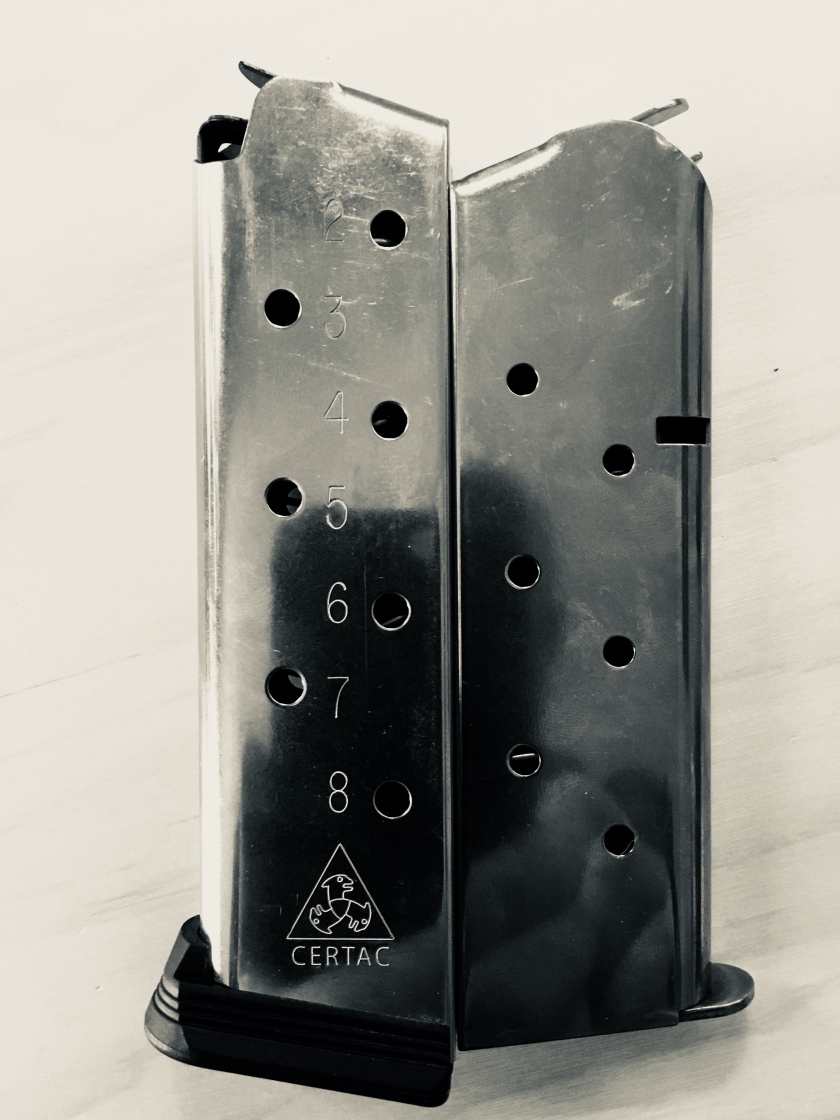A more accurate title for this post might be “What kind of person does well with 1911s?”
More than many other designs, the 1911 requires some mechanical aptitude from its owner. Ideally, the enthusiastic user will become their own armorer. I don’t write this because the 1911 has a bad design. I write it because the 1911 was designed to be built with more craftsmanship and fitting than is economically feasible in 2017.
An enthusiast for this design will be happy to learn the tuning tweaks. In my recent experience with Colt 1911s over the last few years, they have all run fairly well right out the box. I still dress the hook and add tension to the extractor until a loaded 230 gr. cartridge is held against the breech face as I wobble the slide. Once this is accomplished, (30 minutes of effort) the guns run beautifully.
The following are a few things I’ll pass along to any 1911 enthusiasts reading this:
A Glock is designed to run with only 6 drops of oil. A 1911 has a good deal more bearing surface and swept area so it needs extra lubrication. The AR community likes to say “ARs run wet” – the same can be said for 1911s. Long slide to frame interfaces, multiple locking lugs, ignition sets that rotate rather than slide forward are all aspects that are going to need more lube than a more modern polymer framed design.
Good magazines are critical for any semi-auto firearm. There are probably dozens of magazine manufacturers that sell 1911 magazines. It shouldn’t be surprising that not all of the magazines available are good.
Avoid “Gun Show” magazines. They are garbage.
Jason Burton of Heirloom Precision regards the 7 round Wilson 47 as a gold standard of 1911 magazines. I won’t argue with him. A 7 round magazine usually has a much beefier spring than an 8 round flush fit magazine and will be more reliable over the long run.
I’ve had good luck with the following 8 round extended tube magazines:
- Chip McCormick Power Mag
- Wilson Combat ETM
- Checkmate
- Tripp Cobramags
The 230 gr. 45 acp cartridge is tougher on magazines than smaller rounds. The ammo stack is heavier and the next round in the stack travels farther before banging into the feed lips. Magazines wear out. Learn to examine them and marking the magazines will help you determine which ones may need new springs or which ones just need to get trashed.
Be honest and be willing to part with a magazine that is past its prime. Think of magazines (and recoil springs) as consumable items, similar to tires on a car.
Buy the Kuhnhausen manuals. Volume One will get you started.
I’ll wrap this post up by saying that there are more 1911 manufacturers now than I even have a desire to remember. Each maker will have differing parts quality and geometry. Tolerances can vary wildly as well. They are not all created equal.
In summary then, learn about the 1911 (this should be fun to you), get books, tools, take classes, enjoy the history, admire the simplicity and durability. If you don’t enjoy it, don’t do it. Move onto another design.


